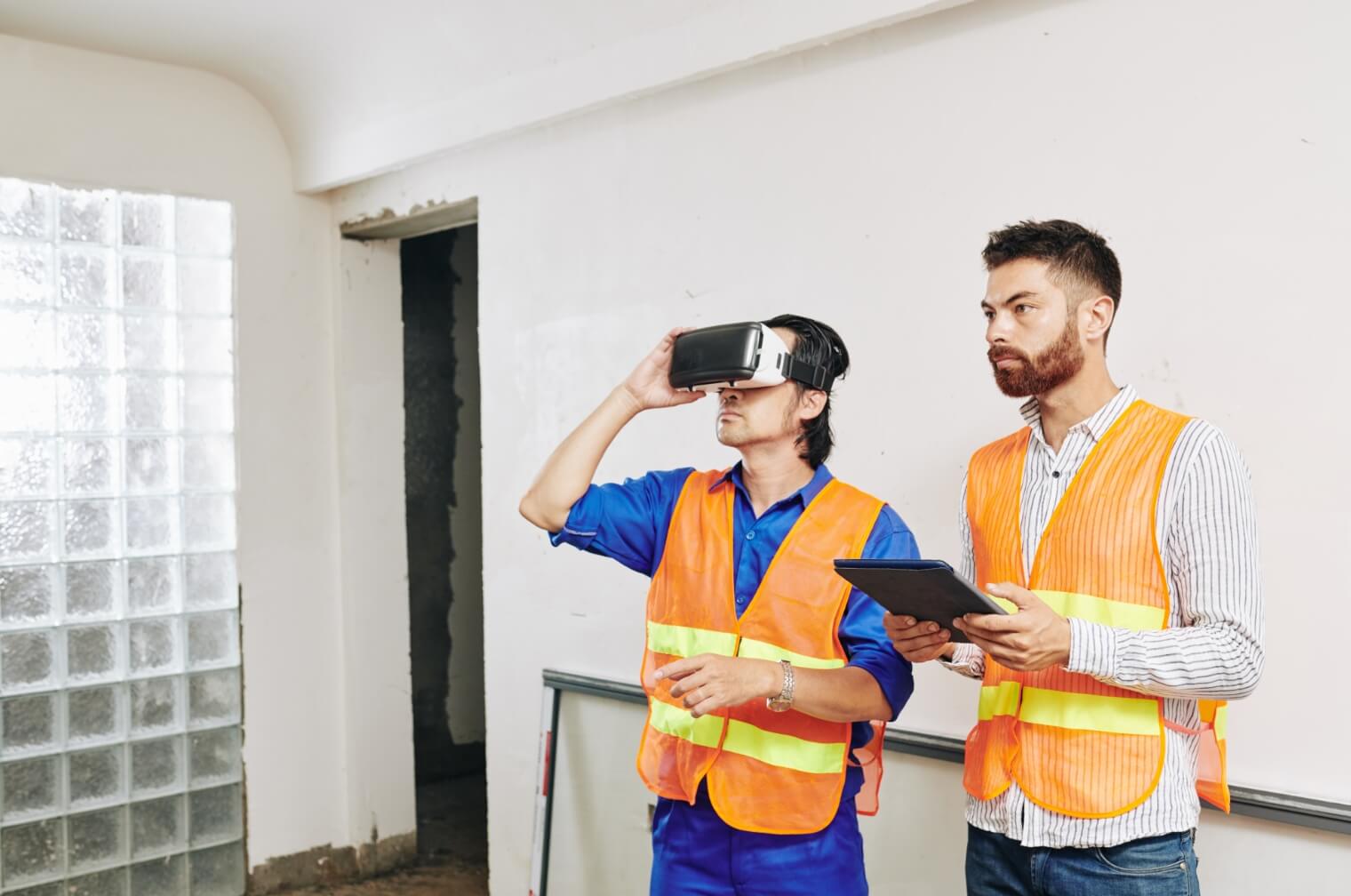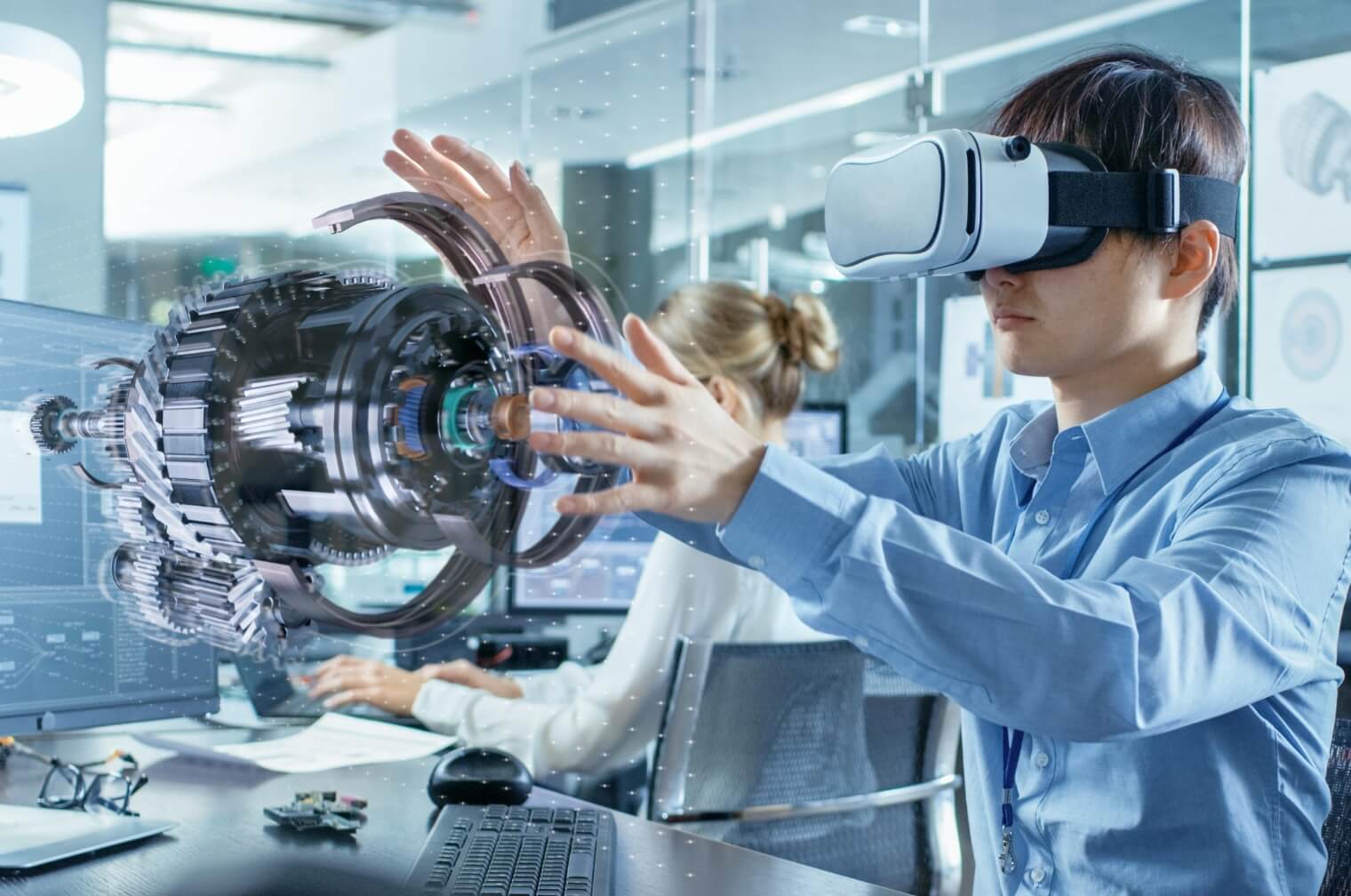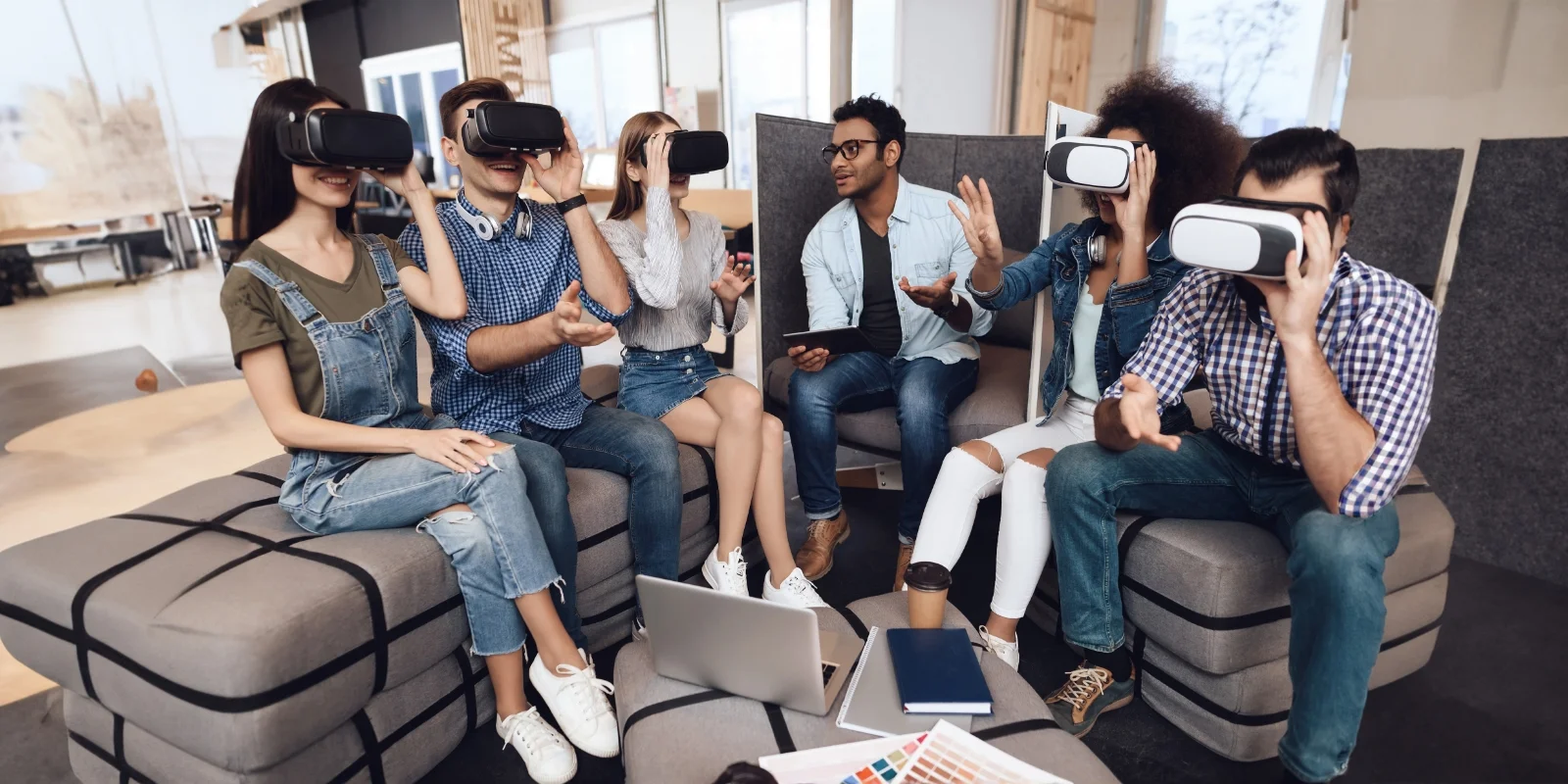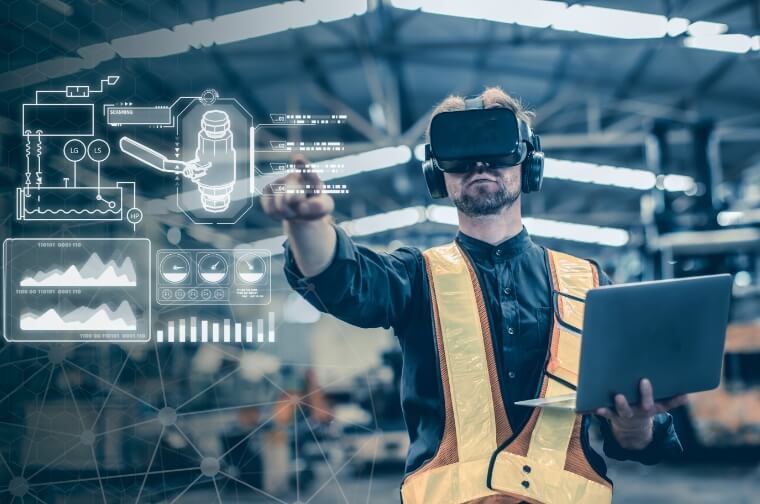Machine Learning and AI for revolution of Tech Companies are changing and streamlining businesses.
Construction Safety VR Solutions are rapidly transforming the way workers are trained to navigate the perilous world of construction sites.
VR, which stands for Virtual Reality, is a technology that creates an artificial, immersive environment for training purposes.
VR immerses trainees in realistic construction environments, allowing them to learn and practice safety protocols without real-world risks.
By providing a safe and controlled learning environment, VR construction safety solution training addresses the unique challenges of the industry.
Evaluation of VR construction safety solution training programs
Evaluating the effectiveness of Virtual Reality VR safety training Solution programs is a crucial step to ensure that your investment in this innovative technology is delivering the desired results.
Measuring learning outcomes and knowledge retention
Evaluate trainee knowledge by assessing how effectively they apply safety measures in real-world scenarios with VR construction safety solution.
Assessing behavioral change and performance improvement
Look for improved safety behaviors and performance on construction sites, as this indicates the effectiveness of VR construction safety solution.
Analyzing cost savings and efficiency gains
Analyze cost savings related to reduced injuries, accidents, and training expenses, while also measuring efficiency gains.
Reviewing user feedback and satisfaction ratings
User feedback is invaluable. Collect ratings, comments, and suggestions to continually improve VR training programs.
Realism and accuracy
Evaluate the realism and accuracy of the VR simulations in representing construction site scenarios. Assess if the virtual environment accurately reflects potential hazards, site conditions, and safety procedures.
How to use VR for construction safety training
Virtual Reality (VR) has emerged as a game-changing technology for enhancing construction safety training. Here’s a step-by-step guide for Effective VR Training Techniques:
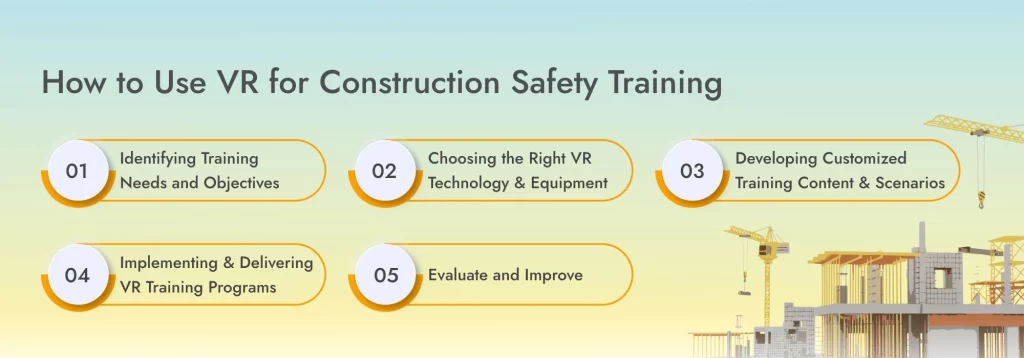
Identifying training needs and objectives
Before implementing VR training, it’s essential to identify the specific safety training needs and objectives for your construction workforce.
Choosing the right VR technology and equipment
Selecting the appropriate equipment for VR construction safety solution is crucial. Factors like cost, compatibility, and durability should be considered to ensure a seamless training experience.
Developing customized training content and scenarios
Tailoring training content to your construction projects and hazards ensures that trainees receive relevant, scenario-specific training.
Implementing and delivering VR training programs
The successful implementation of VR training involves onboarding, technical support, and training management. A clear delivery plan is crucial for trainees to access the content easily.
Evaluate and improve
Evaluate the effectiveness of the VR training program through ongoing assessment, feedback, and continuous improvement. Use evaluation results to refine the VR content, adjust training objectives, and enhance the overall training program.
Benefits of VR in construction safety training
Ensuring that construction workers are well-trained to handle the difficulties they face on the job site is important. The benefits of VR in construction are listed below.
Enhanced learning and retention
The immersive nature of VR makes training more engaging, resulting in better knowledge retention.
Digital experience services, like VR construction development, allow trainees to experience the consequences of their actions in a safe, virtual environment. This immersive training reinforces the importance of safety procedures in a way that traditional methods cannot.
Realistic and immersive training scenarios
Construction Safety VR Solutions recreates real construction environments, enabling trainees to experience realistic scenarios.
This enhances their preparedness for on-site situations and helps them develop effective safety habits.
Safe and controlled environment for practice
VR allows trainees to make mistakes and learn from them without jeopardizing their safety.
This controlled environment is ideal for mastering complex safety procedures and equipment operation.
Reduced costs and increased efficiency
Traditional safety training often involves expenses like travel, equipment setup, and physical materials.
VR construction development eliminates these costs and increases training efficiency, as it can be accessed from anywhere with compatible equipment.
Customizable training
VR allows for customizable training scenarios based on the specific needs of the trainees.
They can experience different scenarios, hazards, and procedures, allowing them to practice and master skills in a variety of situations.
Developing effective VR construction safety training programs
VR technology is offering a revolutionary approach to safety training. It provides an immersive and interactive learning experience, imitates real hazards, and offers cost-effective and customizable solutions.
With VR construction safety training programs, companies can better protect their workers, reduce incidents, and create a safer working environment.
As technology continues to advance, the construction industry must embrace these innovations to ensure the well-being of its workforce.
ViitorCloud Technologies has expertise in software development and VR application design has allowed our VR Developers to create highly realistic and effective safety training programs for the construction industry.
Conclusion
VR construction safety solution offers a groundbreaking solution to the safety challenges faced by the construction industry.
Implementing VR construction safety solutions will not only improve your workforce’s safety but also your bottom line.
By investing in Construction Safety VR Solutions, we invest in the lives and well-being of our construction workforce, making the future of construction brighter, safer, and more sustainable.
Frequently asked questions
VR can be used to improve construction safety in several ways, including Training workers on safety procedures, Identifying and mitigating hazards, and Improving communication and collaboration.
The cost of VR training for construction can vary depending on a number of factors, including the size and complexity of the training program, the type of VR equipment used, and the experience of the VR training provider.
Some of the best VR training providers for construction include STRIVR, Stantec, VR Training Alliance, HTC VIVE Enterprise, and 360Training.
Some of the benefits of using VR for construction designs are Visualizing designs in 3D, collaborating with stakeholders, Improved communication, and identifying and assessing potential problems.




